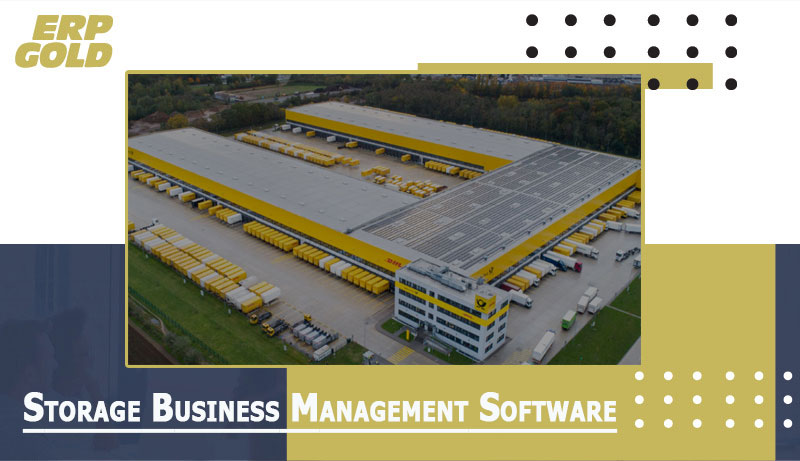Effective inventory management is crucial for success in the online marketplace. It involves monitoring stock levels, managing the movement of goods, and ensuring products are available when and where customers want them. This systematic control is essential for online retailers looking to improve their operations and provide a great customer experience.
Inventory management techniques are not just about keeping products in stock; they are key to understanding sales trends and influencing profitability. With many retail operations struggling with supply chain availability and accuracy, mastering these techniques can give you a significant edge over competitors.
In this article, we’ll explore the essential inventory management techniques that online businesses need to know. We’ll cover everything from basic practices to advanced strategies, all designed to help you boost sales and maximize profits. Whether you’re considering using affordable custom order management software or seeking expert advice on streamlining your inventory workflow, understanding these techniques is crucial for driving business success. For further assistance, feel free to reach out to us at ERP Gold. We’re here to help you optimize your inventory management process so that you can focus on growing your business.
1. Basics of Inventory Management for Online Businesses
Inventory management is the foundation of every business, responsible for ensuring efficient supply chain and customer satisfaction. It involves tracking stock levels, managing the movement of goods and aims to reduce costs while increasing profitability. For online businesses, mastering inventory management is essential.
Key Aspects of Inventory Management:
- Stock Level Monitoring: Regularly tracking how much inventory is on hand and on order to meet customer demand.
- Movement of Goods: Overseeing the flow of items from supplier to warehouse, then to the customer.
- Cost Minimization: Strategically managing stock to reduce holding costs and increase cash flow.
- Profit Maximization: Using inventory insights to maximize sales potential and revenue.
Effective inventory management practices provide a smooth shopping experience that meets customer expectations regarding product availability and quick delivery. With the right systems in place, such as ERP Gold’s versatile inventory management software, businesses can customize their approach to suit specific needs, saving both time and resources.
For the wholesale side of online businesses, efficient inventory management within multiple warehouses has become equally important. Implementing advanced solutions like ERP Gold’s wholesale inventory management software improves productivity by simplifying complex tasks related to large-scale inventory handling.
By ensuring a clear understanding of these fundamental aspects, online businesses can establish a strong position in competitive markets, ensuring excellent operations and earning consumer trust.
2. The Role of Technology in Modern Inventory Management
In the world of online businesses, leveraging advanced technologies isn’t just an advantage—it’s necessary for survival and growth. Technologies like Marketplace software, POS (Point of Sale) software, and ERP (Enterprise Resource Planning) systems are crucial for creating and implementing effective inventory control and management strategies.
Marketplace software
Think of marketplace software as your window to the world. These systems offer:
- Centralized Tracking: Allows you to manage stock levels across multiple sales channels in real-time.
- Automation: Automatically update inventory after each sale to reduce the risk of selling out or overselling.
- Increased Sales: Allows you to sell your product / service literally around the world while in one place.
POS Software
When you integrate advanced Point Of Sale software with your inventory management, it enhances how you manage your sales channels. The software streamlines operations by providing real-time insights into stock levels, sales data, and customer behavior. by:
- Simplified Transactions: Make the checkout process straightforward with quick updates to inventory levels and create the digital paper trail.
- Customer Insights: Keep track of customer purchase history and preferences, enabling you to create personalized marketing strategies.
- Sales Data Analysis: Gain valuable information about your best-selling products and the busiest times for sales.
ERP Systems
Using an ERP system, such as ERP Gold, goes beyond just managing inventory—it covers all aspects of your business processes. Real-Time Visibility: Obtain detailed views of your business operations, including leads in your pipeline to total material cost for product costing.
- Integrated Processes: Ensure everything flows smoothly between purchasing, sales, accounting, and managing customer relationships.
When these technology solutions are seamlessly connected together, online businesses can ensure that all their operations are consistent across all platforms. This integration not only improves how things work behind the scenes but also enhances the experience for customers by ensuring products are available and delivered on time. For instance, using ERP Gold’s Multi-Channel Inventory Management can bring all your marketplace partnerships (Amazon, Walmart, eBay, etc) onto one platform with constant visibility—something that’s essential for succeeding in online retail.
By embracing these technological innovations, businesses can tackle the complex challenges that come with managing large amounts of stock data while also setting themselves up for scalable growth in a highly competitive digital marketplace.
3. Advanced Techniques for Effective Inventory Management
The advanced techniques for effective inventory management center around three junctures within inventory control: Tracking and monitoring; Stock Availability; and Costing and Evaluation. Effective inventory tracking and monitoring are fundamental for online businesses to maintain the right amount of stock, avoiding situations of having too much or too little inventory. These methods help retailers reduce costs associated with excess inventory while ensuring that products are always available to satisfy customer demand.
Real-Time Inventory Tracking: Implementing real-time tracking systems allows for immediate visibility of stock levels and the movement of goods. This constant oversight helps in making quick decisions regarding stock replenishment and identifying any issues that could lead to potential stockouts or overstocks.
Regular Audits are the periodic manual checks, in addition to automated systems, which validate inventory accuracy. Any differences between the physical stock count and digital records can be identified and corrected promptly, ensuring that data is reliable.
Data Analysis by using data analytics to provide insights into sales patterns, seasonal trends, and customer preferences. Online retailers can proactively adjust their inventory levels to match expected demand.
Stock availability goes hand in hand with tracking and monitoring. When it comes to stock availability, you can’t make money when you don’t have product to sell. Inventory has to be available to sell but it you are carrying too much inventory it is eating into your profits. Here are three techniques that help figure out the right amount of inventory to carry.
EOQ (Economic Order Quantity) is a formula used to determine the best order size that minimizes the total cost of inventory. By calculating EOQ, you find the balance between the cost of ordering and the cost of carrying inventory.
MOQ (Minimum Order Quantity) refers to the smallest amount you can order from your supplier. This helps online retailers to negotiate better terms with your suppliers.
Safety Stock is the buffer and helps online businesses manage the unpredictable nature of supply chains.
The final set of techniques involves the costing and valuation of your inventory, and each can play a significant factor in your inventory carrying cost.
FIFO (First-In, First-Out), this method sells the oldest inventory first. It works well for perishable goods and generally leads to higher net income.
LIFO (Last-In, First-Out), the most recent inventory is sold first but can lead to obsolete inventory if not managed properly.
ABC Analysis: This method divides your inventory into 3 group, whereas A items are high value products with low frequency of sales and C items are low value with high frequency of sales. The theory is you focus on controlling the A items and allocate less resources to the C items, which improves accuracy and turnover.
These practices all play a significant role in managing cash flow by reducing the amount of money tied up in unsold inventory and improving profitability through better control of inventory-related expenses. Having an efficient approach to managing inventory also allows businesses to respond quickly to changes in market demand.
Incorporating innovative systems like those offered by ERP Gold can provide a competitive advantage by effectively managing your entire business allowing you to concentrate on maximizing profits and growing your business.
Businesses can gain more insights into inventory management by exploring the ERP Gold blog, which offers a wealth of information through its insightful articles and industry news updates. These resources can further enhance your understanding of using technology in inventory management and help you stay ahead in the competitive e-commerce landscape.
Conclusion
Effective inventory management techniques are crucial for the long-term success of online businesses. By assessing current inventory management practices, you find potential improvements, making sure that stock levels are optimized, and customer demand is consistently met.
As e-commerce continues to change, it becomes more and more important to be able to adjust and improve inventory processes. Embracing modern solutions like ERP Gold can give online retailers the tools they need for centralized control and automation, helping them achieve their growth goals through more efficient operations.
FAQs (Frequently Asked Questions)
What is the relevance of inventory management to online businesses?
Inventory management is crucial for online businesses as it helps in improving operations, increasing sales, cutting costs, and maximizing profitability. In addition, effective inventory management techniques can contribute to operational efficiency and customer satisfaction.
How can advanced technologies like inventory management systems benefit online businesses?
Leveraging advanced technologies like marketplace software, POS software, and ERP systems is crucial for implementing successful inventory management strategies in online businesses. Integrating these technology solutions ensures seamless inventory operations across different platforms.
Why is real-time inventory tracking important for online retailers?
Real-time inventory tracking allows you to react quicker to inventory spikes or sales spikes and provide the customer with the product he / she is looking for.
What are some advanced inventory management techniques that can help online businesses balance cost savings and customer demand?
Key advanced inventory management techniques like EOQ (Economic Order Quantity) and MOQ (Minimum Order Quantity) can help online businesses strike a balance between cost savings and meeting customer demand. Additionally, ABC analysis can categorize products based on their value and prioritize inventory control efforts.





